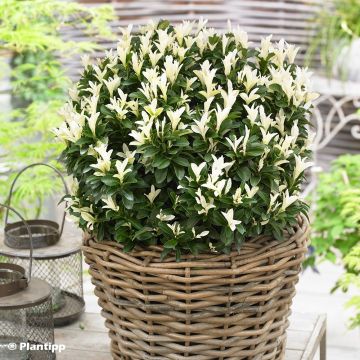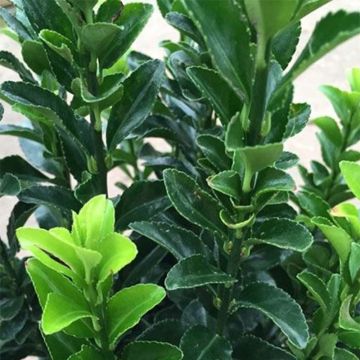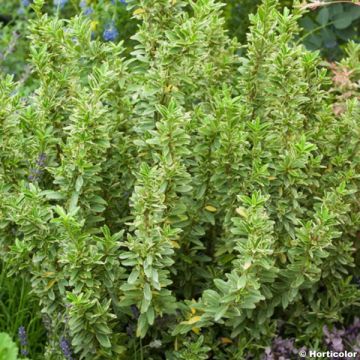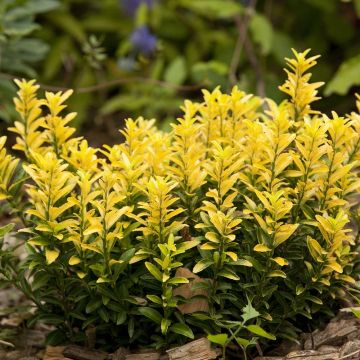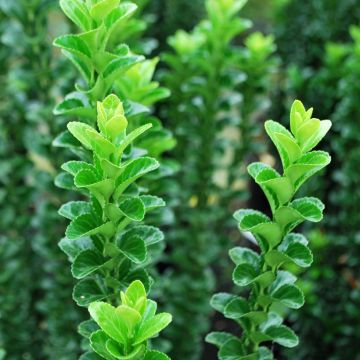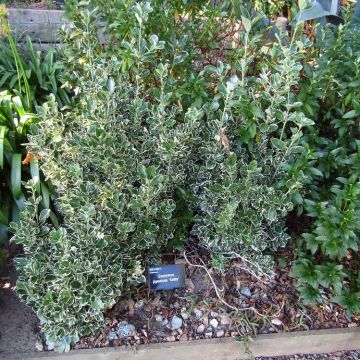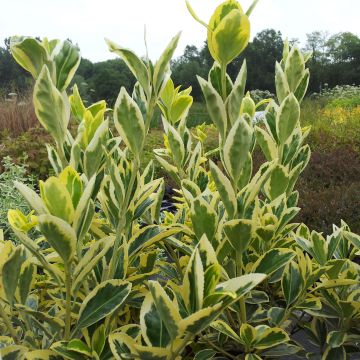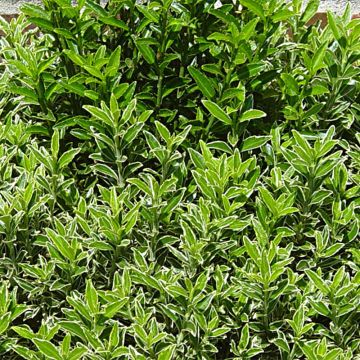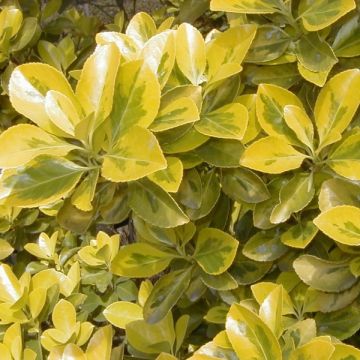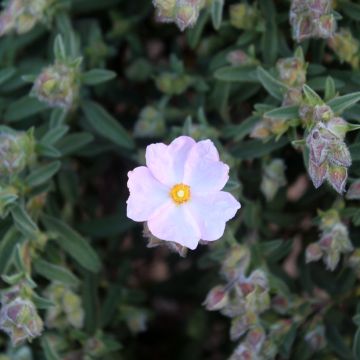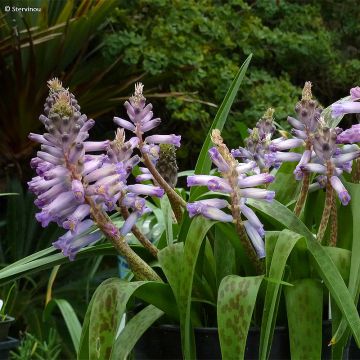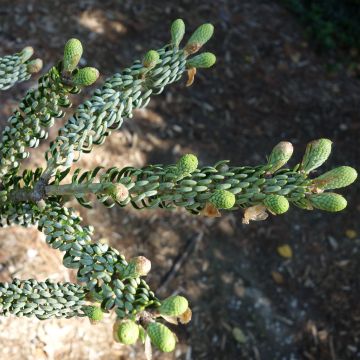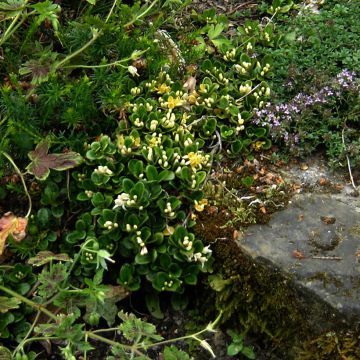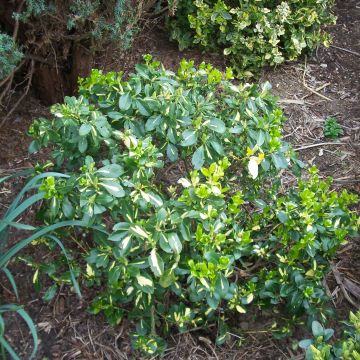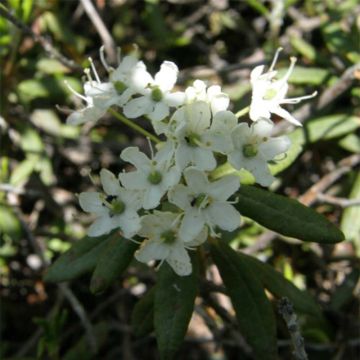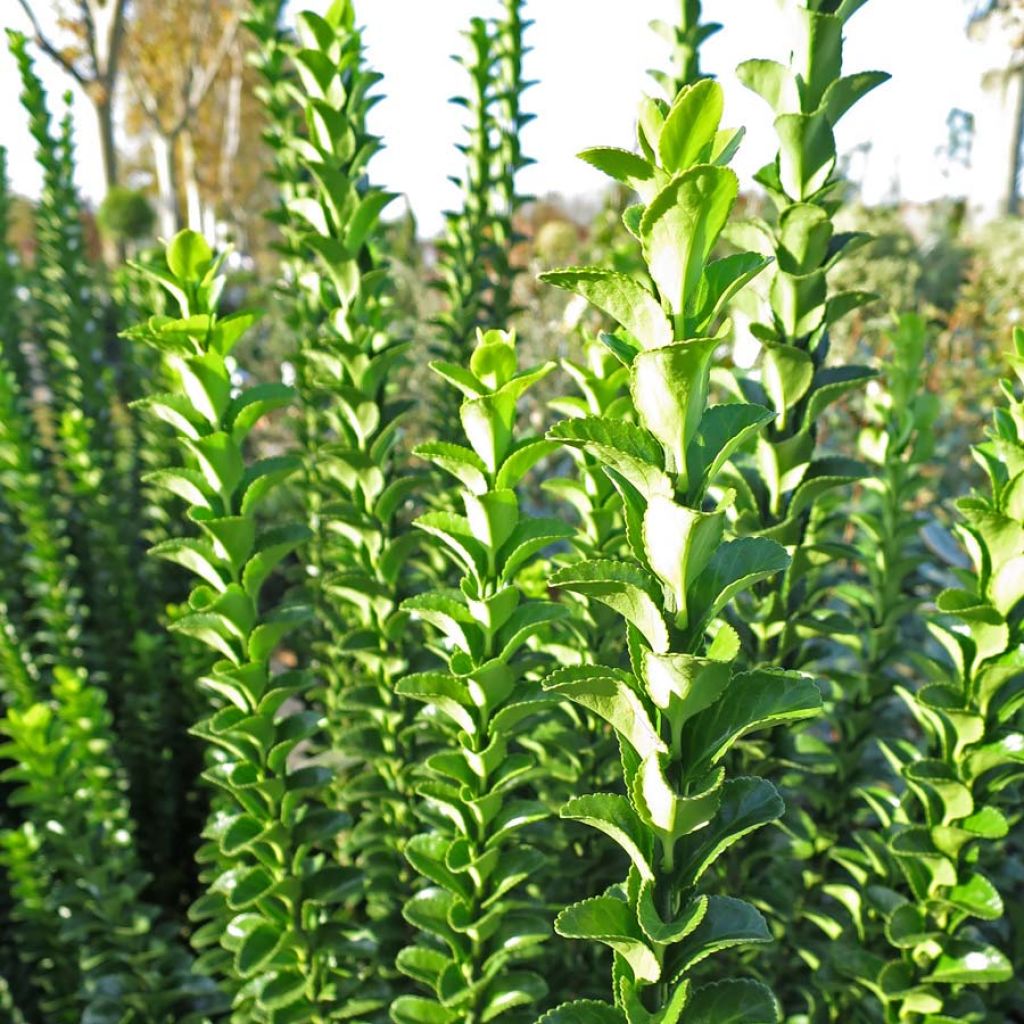

Euonymus japonicus Benkomasaki Erecta - Japanese Spindle
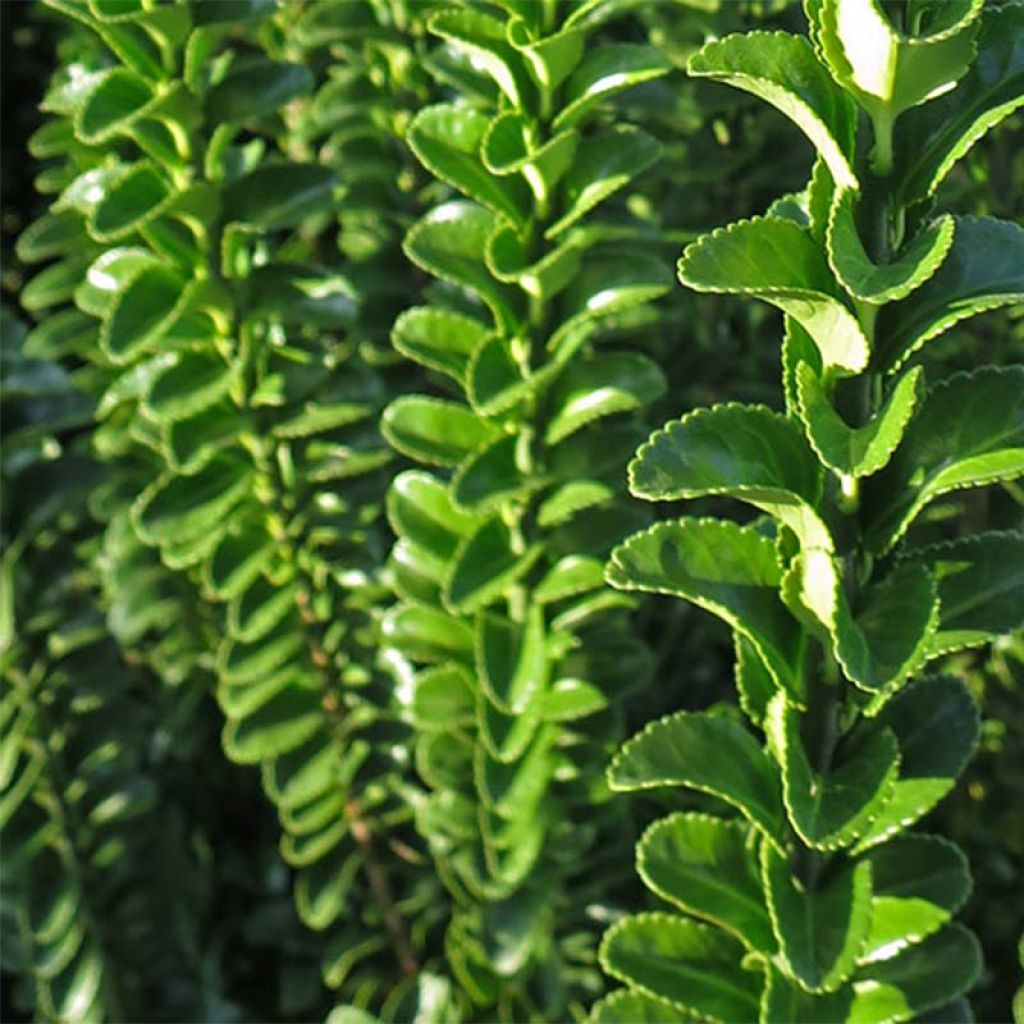

Euonymus japonicus Benkomasaki Erecta - Japanese Spindle
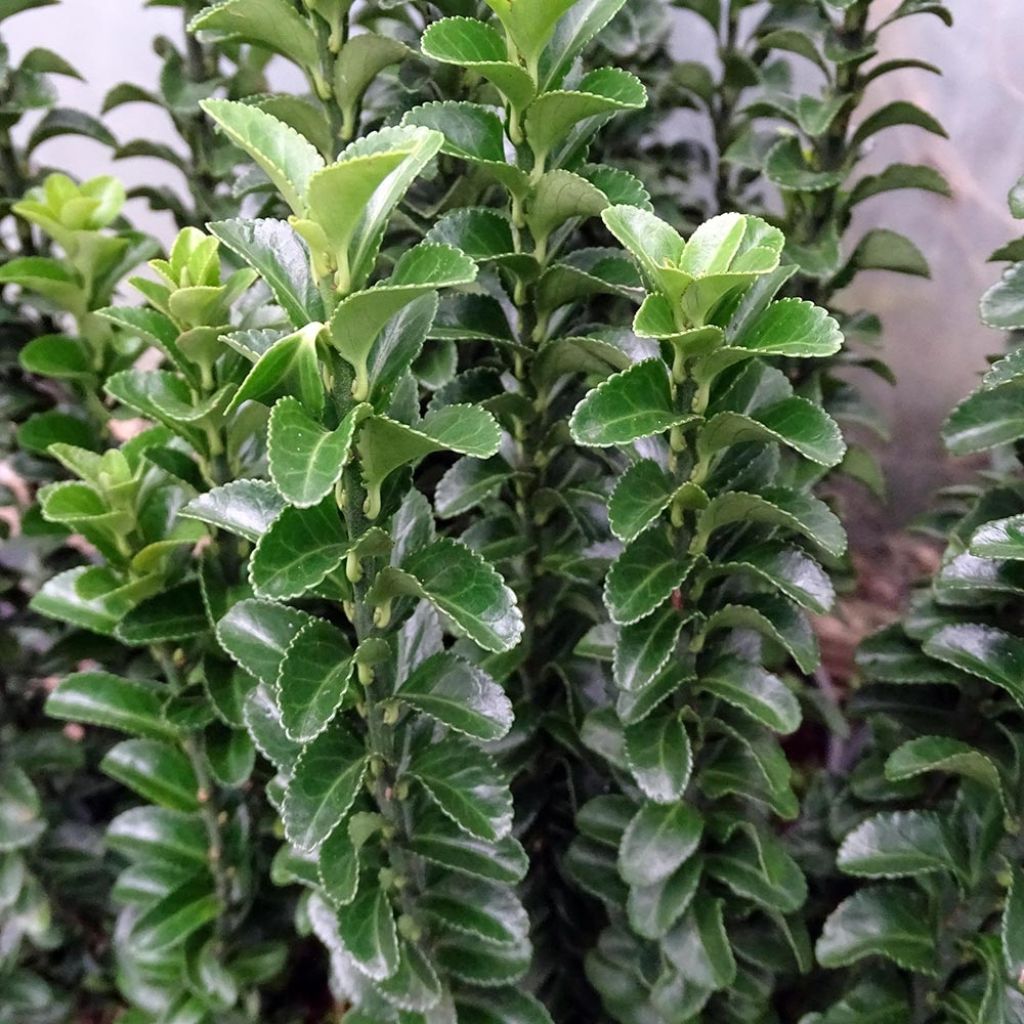

Euonymus japonicus Benkomasaki Erecta - Japanese Spindle
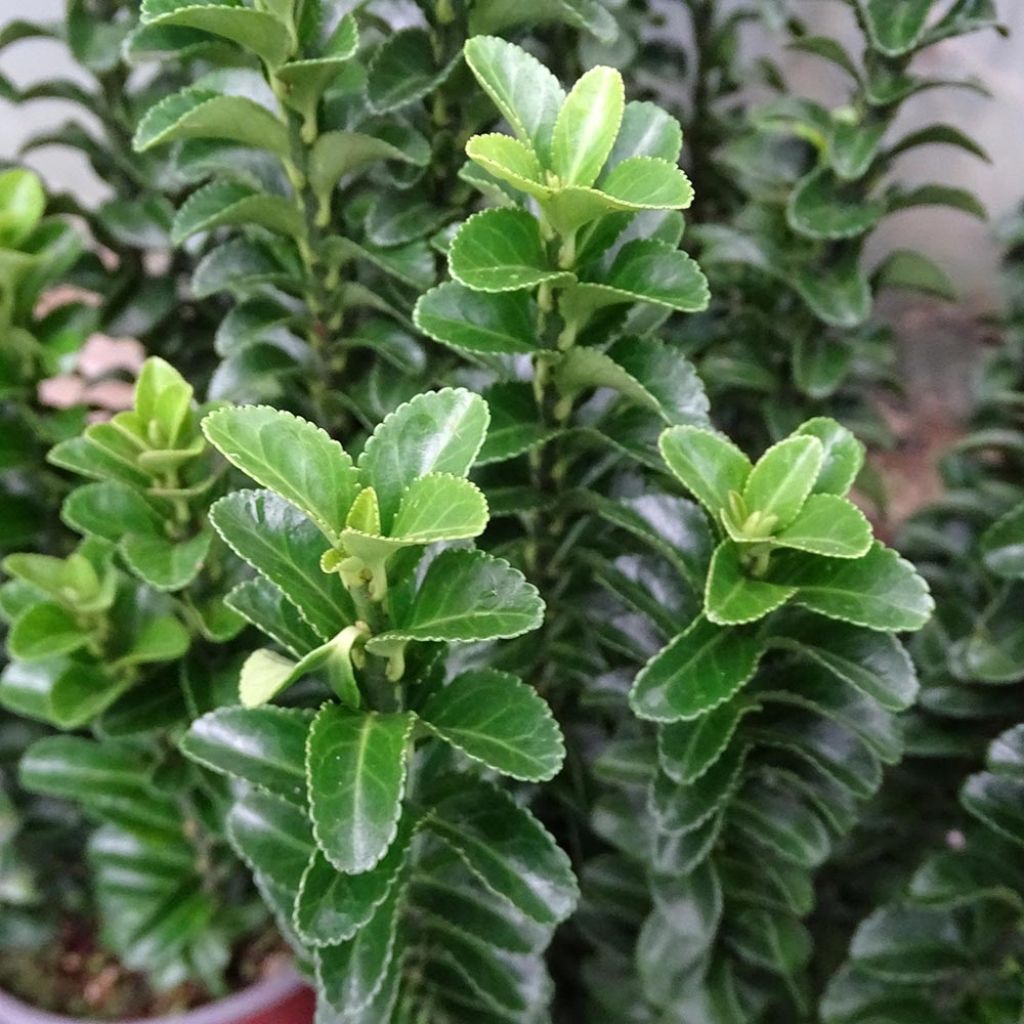

Euonymus japonicus Benkomasaki Erecta - Japanese Spindle
Euonymus japonicus Benkomasaki Erecta - Japanese Spindle
Euonymus japonicus Benkomasaki
Japanese Spindle, Evergreen Spindle
This item cannot be shipped to the selected country
Delivery charge from €5.90
Delivery charge from €5.90
More information
Schedule delivery date,
and select date in basket
This plant carries a 24 months recovery warranty
More information
We guarantee the quality of our plants for a full growing cycle, and will replace at our expense any plant that fails to recover under normal climatic and planting conditions.
From €5.90 for pickup delivery and €6.90 for home delivery
Express home delivery from €8.90.
From €5.90 for pickup delivery and €6.90 for home delivery
Express home delivery from €8.90.
Does this plant fit my garden?
Set up your Plantfit profile →
Description
The Euonymus japonicus Benkomasaki Erecta is a variety of Japanese Spindle with a columnar, erect habit, and shiny, evergreen foliage. With its vertical branches covered in small leaves regularly arranged and its dense growth, it has an ornamental value similar to that of boxwood or yew, but its growth is slightly faster. Tolerating air pollution well, attractive all year round, and lending itself admirably to topiary, this well-groomed shrub has its place in urban or French-style gardens, as well as on terraces and balconies. This spindle should be grown in regions spared from very harsh winters and dry summers.
The Japanese Spindle belongs to the family of Celastraceae. It originates, as its name suggests, from Japan. But it can also be found in China and Korea. In the wild this large shrub grows on slopes, in open areas on the edge of forests and the seaside where it can reach a height of 8m (26.2ft) and become a tree. Its hardiness is around -12°C (10.4°F), and its growth is quite slow. The cultivar 'Benkomasaki', also marketed under the names 'Benkomoki', 'Erecta', Greenspire, or 'Green Rocket' ®, is a horticultural variety derived from the wild species.
In our gardens, 'Erecta' will reach an average height of 1.70m (5.5ft) with a spread of 1.30m (4.3ft), more if not regularly pruned. Its habit is naturally columnar and erect. Well-branched from the base, its upright branches carry dense foliage, composed of shiny, bright green leaves arranged closely and geometrically around the stem, similar to those of some shrubby veronicas. They are ovate in shape, 2 to 5cm (0.8 to 2in) long, finely toothed at the edges. The insignificant flowering takes place from May to July, at the tips of young shoots. Tiny white-greenish flowers with 4 petals are grouped in clusters. They are pollinated by insects and are sometimes followed by the formation of small green fruits that turn pink and orange in autumn, hanging under the branches.
Well adapted to the seaside and urban gardens, the Japanese Spindle Benkomasaki is an original and architectural shrub that can be used to replace boxwood in a low and regularly pruned hedge or to delineate an area of the garden such as the vegetable garden or a small rose garden. It can also be used to create hedges on the edges of a small garden or along a terrace to protect them from prying eyes. In the ground, it can be used to decorate, like a statue rising from a mass of lower shrubs and perennials. In this usage, it can be associated, for example, with Berberis atropurpurea Nana, variegated Fortune spindles, variegated dwarf ivies, ground-cover roses, and many others.
Tip: In case of drought, water to maintain beautiful foliage.
Report an error about the product description
Euonymus japonicus Benkomasaki Erecta - Japanese Spindle in pictures
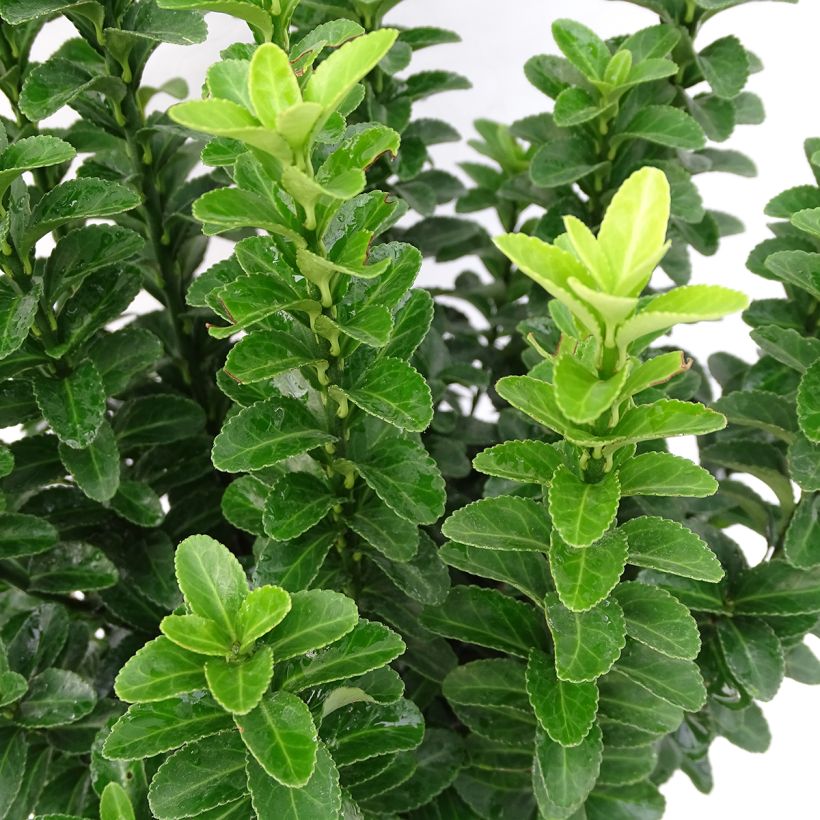

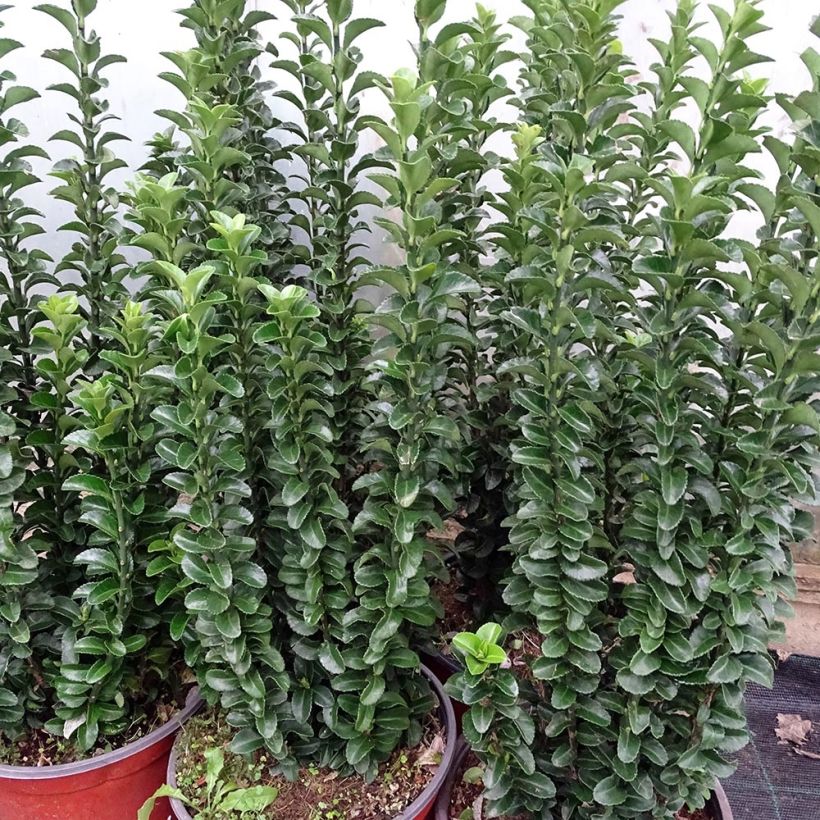

Plant habit
Flowering
Foliage
Botanical data
Euonymus
japonicus
Benkomasaki
Celastraceae
Japanese Spindle, Evergreen Spindle
Cultivar or hybrid
Other Japanese Spindle Trees - Euonymus japonicus
Planting and care
The Euonymus japonicus Benkomasaki is best planted in spring in any well-drained soil in a sunny or lightly shaded position. It prefers deep, humus-rich soils that remain moist and tolerates the presence of chalk in the soil. It is sensitive to severe frost and is hardy down to approximately -12°C (10.4 °F). Hot and dry climates are not very suitable for this evergreen spindle tree, as it may become infested with mealybugs and sooty mould. Pruning is best between April and May. Caution: pruning too early in spring can be harmful to young tender shoots in case of late frosts. Frequent pruning can lead to the development of sooty mould, especially in very dry soil. Apply fertilizer twice a year, in early spring and autumn. In case of drought, water to maintain a beautiful foliage. If the plant is grown in a pot, it is necessary to change the growing medium once a year in spring. Protect your potted plant if severe frost is forecasted (<-5°C (23°F)).
Planting period
Intended location
Care
-
, onOrder confirmed
Reply from on Promesse de fleurs
Evergreen shrubs
Haven't found what you were looking for?
Hardiness is the lowest winter temperature a plant can endure without suffering serious damage or even dying. However, hardiness is affected by location (a sheltered area, such as a patio), protection (winter cover) and soil type (hardiness is improved by well-drained soil).

Photo Sharing Terms & Conditions
In order to encourage gardeners to interact and share their experiences, Promesse de fleurs offers various media enabling content to be uploaded onto its Site - in particular via the ‘Photo sharing’ module.
The User agrees to refrain from:
- Posting any content that is illegal, prejudicial, insulting, racist, inciteful to hatred, revisionist, contrary to public decency, that infringes on privacy or on the privacy rights of third parties, in particular the publicity rights of persons and goods, intellectual property rights, or the right to privacy.
- Submitting content on behalf of a third party;
- Impersonate the identity of a third party and/or publish any personal information about a third party;
In general, the User undertakes to refrain from any unethical behaviour.
All Content (in particular text, comments, files, images, photos, videos, creative works, etc.), which may be subject to property or intellectual property rights, image or other private rights, shall remain the property of the User, subject to the limited rights granted by the terms of the licence granted by Promesse de fleurs as stated below. Users are at liberty to publish or not to publish such Content on the Site, notably via the ‘Photo Sharing’ facility, and accept that this Content shall be made public and freely accessible, notably on the Internet.
Users further acknowledge, undertake to have ,and guarantee that they hold all necessary rights and permissions to publish such material on the Site, in particular with regard to the legislation in force pertaining to any privacy, property, intellectual property, image, or contractual rights, or rights of any other nature. By publishing such Content on the Site, Users acknowledge accepting full liability as publishers of the Content within the meaning of the law, and grant Promesse de fleurs, free of charge, an inclusive, worldwide licence for the said Content for the entire duration of its publication, including all reproduction, representation, up/downloading, displaying, performing, transmission, and storage rights.
Users also grant permission for their name to be linked to the Content and accept that this link may not always be made available.
By engaging in posting material, Users consent to their Content becoming automatically accessible on the Internet, in particular on other sites and/or blogs and/or web pages of the Promesse de fleurs site, including in particular social pages and the Promesse de fleurs catalogue.
Users may secure the removal of entrusted content free of charge by issuing a simple request via our contact form.
The flowering period indicated on our website applies to countries and regions located in USDA zone 8 (France, the United Kingdom, Ireland, the Netherlands, etc.)
It will vary according to where you live:
- In zones 9 to 10 (Italy, Spain, Greece, etc.), flowering will occur about 2 to 4 weeks earlier.
- In zones 6 to 7 (Germany, Poland, Slovenia, and lower mountainous regions), flowering will be delayed by 2 to 3 weeks.
- In zone 5 (Central Europe, Scandinavia), blooming will be delayed by 3 to 5 weeks.
In temperate climates, pruning of spring-flowering shrubs (forsythia, spireas, etc.) should be done just after flowering.
Pruning of summer-flowering shrubs (Indian Lilac, Perovskia, etc.) can be done in winter or spring.
In cold regions as well as with frost-sensitive plants, avoid pruning too early when severe frosts may still occur.
The planting period indicated on our website applies to countries and regions located in USDA zone 8 (France, United Kingdom, Ireland, Netherlands).
It will vary according to where you live:
- In Mediterranean zones (Marseille, Madrid, Milan, etc.), autumn and winter are the best planting periods.
- In continental zones (Strasbourg, Munich, Vienna, etc.), delay planting by 2 to 3 weeks in spring and bring it forward by 2 to 4 weeks in autumn.
- In mountainous regions (the Alps, Pyrenees, Carpathians, etc.), it is best to plant in late spring (May-June) or late summer (August-September).
The harvesting period indicated on our website applies to countries and regions in USDA zone 8 (France, England, Ireland, the Netherlands).
In colder areas (Scandinavia, Poland, Austria...) fruit and vegetable harvests are likely to be delayed by 3-4 weeks.
In warmer areas (Italy, Spain, Greece, etc.), harvesting will probably take place earlier, depending on weather conditions.
The sowing periods indicated on our website apply to countries and regions within USDA Zone 8 (France, UK, Ireland, Netherlands).
In colder areas (Scandinavia, Poland, Austria...), delay any outdoor sowing by 3-4 weeks, or sow under glass.
In warmer climes (Italy, Spain, Greece, etc.), bring outdoor sowing forward by a few weeks.

































